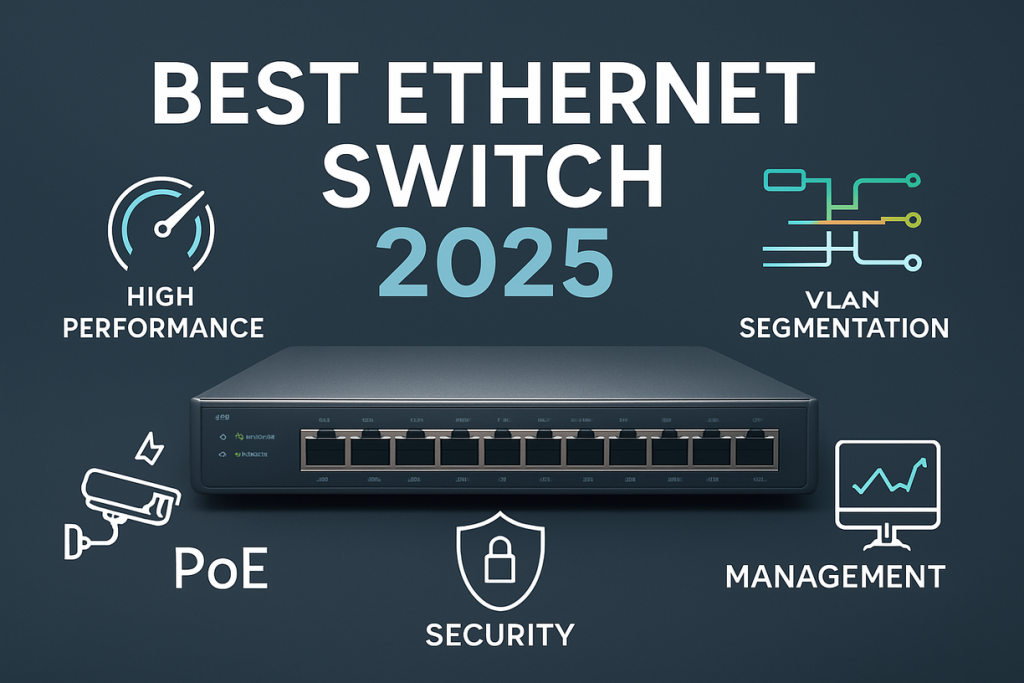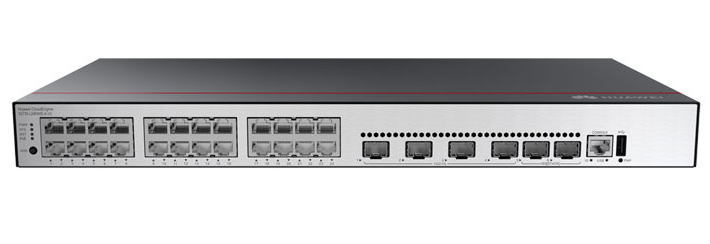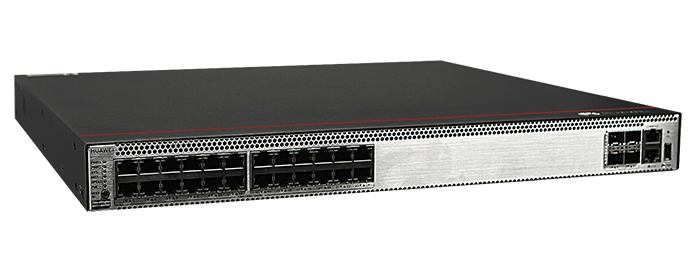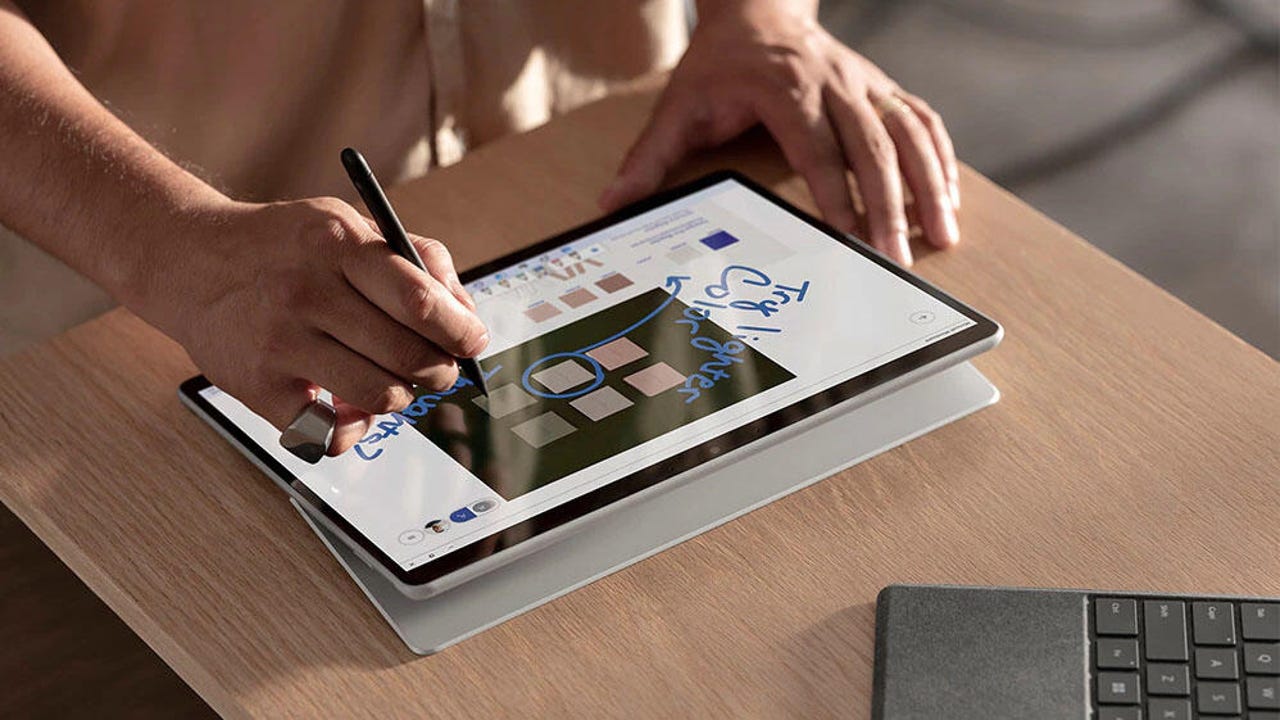
































Microsoft Surface Pro X
MicrosoftMicrosoft unveiled the latest members of the Surface family this week, and the rumor mill was correct. The new Surface Pro 9 will indeed offer an unusual configuration option: You'll be able to choose between an Arm-based CPU or this year's latest x86 CPU from Intel.
Here's the funny thing, though. Microsoft's already been offering this choice, sort of, for the past year or so with theSurface Pro 8 (powered by an 11th Gen Intel Core i7) and the Surface Pro X (with an Arm-based Microsoft SQ1 or SQ2 processor, from Qualcomm). After using both machines extensively for the past few months, I still can't decide which one I prefer.
Also: Everything Microsoft announced at the October Surface event
Although the Surface Pro 8 and Surface Pro X are remarkably similar in terms of hardware, there are a number of odd little design differences between them. Each machine has two USB-C ports, but they're on different sides. The Surface Connector is in a slightly different position on each model. The compartment that allows quick access to the NVMe SSD (and, on the Pro X, the SIM slot) is on a different side beneath the kickstand on each model.
The Pro X is a bit thinner than the Pro 8. It's also lighter, at 275 g compared to 313 g for the Pro 8. (That's the weight without the Type Cover.) That's only a bit more than an ounce, which isn't immediately obvious when you pick up one device of the other. And because both of my devices have a matte black case, it's really hard to tell the difference without a careful inspection.
But in operation, there were plenty of differences.
You would expect the Arm-powered Surface Pro X to have significantly better battery life than the Pro 8. But my observed battery life on these two devices, as measured by the Windows Powercfg utility, isn't all that different: If I take the Surface Pro 8 on the road, I can expect the battery to last roughly 6 hours. If I choose the Surface Pro X, I get a little more than 7 hours of usage.
Apple's MagSafe tech has been integrated into removable batteries. These are your top choices.
Read nowThat doesn't seem like a big difference, does it? Ah, but those numbers are misleading. The Pro 8, you see, has a fairly hefty 50,230 mWh battery, while the battery in the Pro X is noticeably smaller at 38,200 mWh battery. (That also helps explain the difference in weight between the two machines.)
If the Surface Pro X had the same battery as the Pro 8, it's reasonable to expect that battery life would go up by 31.5% (the difference in battery capacity). That would translate to nearly 10 hours of actual, real-world battery life compared to 6 hours for the x86 design.
Review: Surface Pro 8 with LTE: Still in love
Microsoft confirms that the Arm and Intel versions of the Surface Pro 9 will indeed have the same size battery, with a design capacity of 47,700 mWh, so it's reasonable to expect the Arm-powered device to achieve dramatically better real-world battery life.
The Surface Pro X includes a cellular option (with support for physical SIMs and eSIM) for any model, for an extra$150. If you want mobile data on the Surface Pro 8, you'll need to buy from theSurface for Business store , and you'll pay$250 extra for the privilege. On the Surface Pro 9, those options are very different. The Arm-equipped model has a built-in 5G modem, while at this time there's no mobile connectivity option at all for the Intel-based device.
Also: eSIM vs. SIM: What's the difference?
I've used the cellular modem on my Pro X extensively, with a T-Mobile SIM. It's been problem-free and a great alternative when I've been on the road without Wi-Fi.
Historically, the Surface Pro has been a sealed device that's downright hostile to any kind of user repairs or upgrades. With the Surface Pro 8 and Pro X, Microsoft made storage upgrades not just possible but easy. I picked up a1 TB SSD (NVMe, in an M.2 2230 package) , for a little less than$200. Microsoft charges$600 more for a Surface Pro with a 1TB SSD compared to the 256 GB model. That's a pretty big savings!
Earlier, I mentioned the compartment under the kickstand. On both models, you pop off the cover the same way you'd open a SIM slot on a mobile phone, by pushing a SIM ejection tool (or a bent paperclip) into the small hole on the cover.
With that out of the way, you need aTorx T3 screwdriver to remove the single screw that holds the SSD in place. Slide the old drive out, insert the new one, snap the cover back on, and use a recovery drive to install a fresh copy of Windows. It was a remarkably easy process on both devices. I don't expect this to change with the Surface Pro 9.
Both of these devices run Windows 11 exceptionally well, and I had no problem installing the latest release, version 22H2. The x86 compatibility layer on the Surface Pro X is, for the most part, astonishingly good. It runs all the productivity software I normally use, including Microsoft Office, Adobe Acrobat, and Snagit. It even runs the Windows Subsystem for Linux without complaint.
But every so often a compatibility issue rears its ugly head, as a reminder that Arm is not x86.
We tested the best VPN services -- focusing on the number of servers, ability to unlock streaming services, and more -- to determine a No. 1 overall. Plus, we tell you whether free VPNs are worth trying.
Read nowFor example, when I was in Portugal a few months ago, I needed to use a VPN to convince some US-based websites that they should show me the content I subscribe to. I wanted to use the highly rated ExpressVPN, but as I found out after an hour or two of tinkering and Googling, its network drivers don't work on Arm-based devices, and there's no workaround.
In fact, drivers are the Achilles heel of Arm-based Windows. Most x86 apps install and run just fine, but drivers have to be compiled for Arm or they won't work. That's true of network and file system drivers as well as for hardware. For example, I had no trouble connectingLogitech's nifty little K400+ keyboard/touchpad combo to the Pro X via Bluetooth, but I couldn't run the configuration utility to tweak the touchpad's scrolling direction.
And, oddly, I couldn't boot the Pro X using a recovery drive with a USB Type-A to Type-C adapter. That configuration works on the Surface Pro 8, but for the Pro X it refused to boot. To restore the operating system, I had to create a recovery drive on a USB-C flash drive.
Those are all fairly minor issues, the sort of annoyance you run into every other month. As a basic productivity device, the Arm-powered Surface Pro X makes a compelling case. As a general-purpose PC replacement, those niggling compatibility issues can be a dealbreaker.
And one last note: The Surface Pro 8 supports Thunderbolt; the Pro X doesn't. That limits dock and expansion options for the Pro X somewhat, but that consideration is only relevant if you're planning to use it as a desktop replacement. The Surface Pro 9 will also offer Thunderbolt 4 support only on the Intel configuration, making it the superior option if you plan to use it as a full-strength PC that can go from the desktop to the traveling bag without skipping a beat.
 Etiquetas calientes:
tecnología
Nuestro proceso
computación
PC
Etiquetas calientes:
tecnología
Nuestro proceso
computación
PC